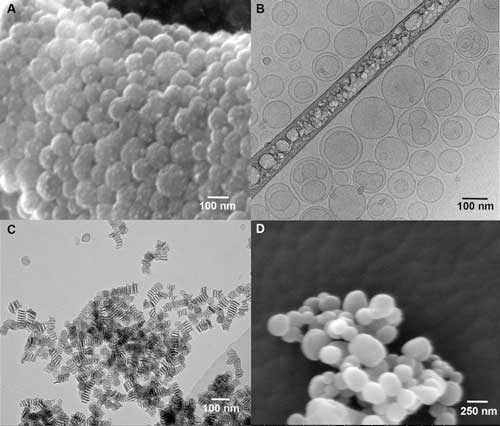| Oct 30, 2018 | |
Tiny, pain free vaccinations - microneedles and nanoparticles(Nanowerk News) If it’s up to PhD student Guangsheng Du, patients don’t need to worry about big needles anymore. At the Leiden Academic Center for Drug Research (LACDR), he studied the use of microneedles and nanoparticles as a new vaccination system. ‘I want to create a more patient-friendly delivery method.’ He defends his PhD on 30 October. |
|
| In his study, Du combined microneedles with nanoparticles to make the first steps towards a new vaccination method. | |
| ‘Microneedles can be used to deliver vaccines in a non-invasive and pain-free way and induce effective immune responses,’ Du explains. ‘Secondly, nanoparticulate vaccines have the potential to improve the immunogenicity of antigens: the ability to provoke an immune response in the body. We can regulate the immune responses by modulating the characteristics of these nanoparticles.’ | |
| Because of the unique properties and advantages of both methods, nowadays there are an increasing number of studies focusing on combining microneedle and nanoparticle technology. These studies aim to improve the immune responses by using a more patient-friendly delivery method. | |
 |
|
| The four types of nanoparticles that Du used in his research. A: Polylactic-co-glycolic acid (PLGA) particles, B: mesoporous silica nanoparticles (MSNs), C: gelatine nanoparticles and D: liposomes | |
Testing |
|
| Du developed two types of microneedle systems: hollow microneedles that can inject nanoparticulate vaccines and microneedles that were coated with the vaccine. Both the type of microneedle and the type and physicochemical characteristics of the nanoparticles appeared to have important influences on the responses provoked in the immune system. | |
| Using hollow microneedles, Du for example found that smaller nanoparticles with controlled release properties correlated with a stronger effect. To test these effects and to find out what needles, particles and injection parameters worked best, Du measured antibody and immune cell responses in mice after each application. The stronger the antibodies and immune cell responses, the better the vaccine worked. | |
A new generation of vaccination |
|
| ‘Microneedles have proven to be a promising tool for vaccination. People can even apply the microneedles themselves, so the costs of immunisation for society may be significantly reduced,’ Du explains. | |
| Another reason costs could be cut down is because nanoparticulate vaccines can achieve a similarly strong immune response to a normal vaccine, but with a smaller dose. | |
| ‘This is because an antigen that is administered in the form of nanoparticles has stronger immunogenicity than a free antigen solution. The use of nanoparticles will therefore help reduce the necessary dose of the antigen and further decrease the costs of vaccination.’ | |
| Finally, Du believes that microneedles will increase the compliance of patients, because the application is non-invasive and pain free. | |
| ‘This will hopefully increase the coverage of vaccination,’ he adds. ‘If the research and future clinical studies are successful, the microneedle system may become a new generation of vaccination methods.’ | |
Microneedles |
|
| Microneedles are small needles of only a few hundred micrometers in length; they are smaller than a millimeter and hardly visible with the naked eye. The needles Du tested were 200 micrometers long. They are applied on the skin with a small plaster. Because of their size, they only penetrate the statrum corneum (the outermost barrier layer of the skin), after which they deliver their components to the body. People who have tried it say the application feels like a cat’s tongue or an emery board. The injection depth is small enough that the microneedles do not touch any nerves or blood vessels. |
| Source: Leiden University | |
|
Subscribe to a free copy of one of our daily Nanowerk Newsletter Email Digests with a compilation of all of the day's news. |
